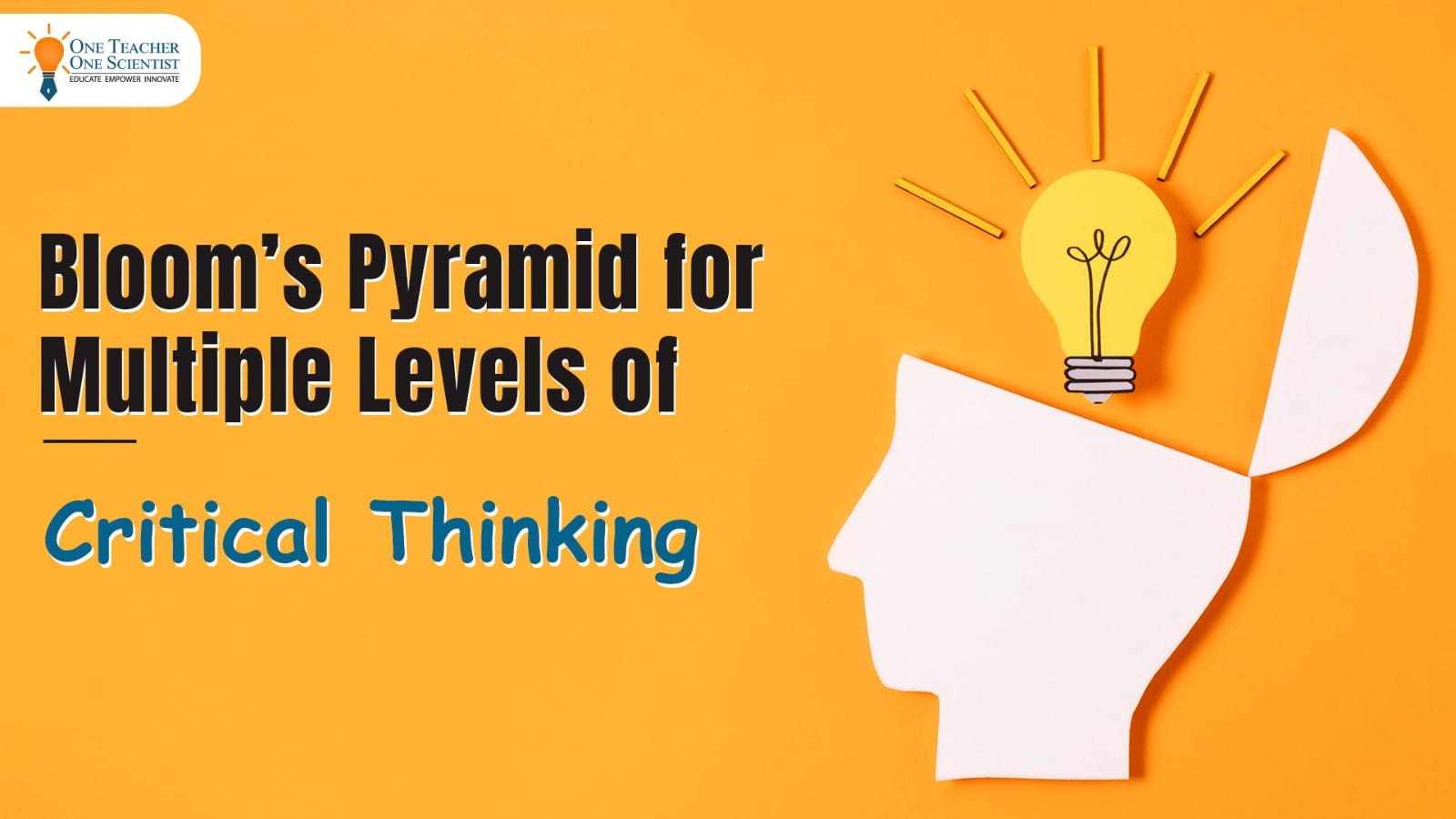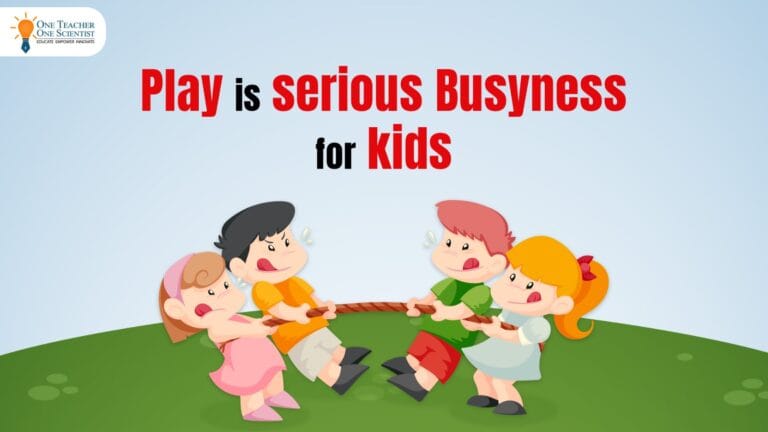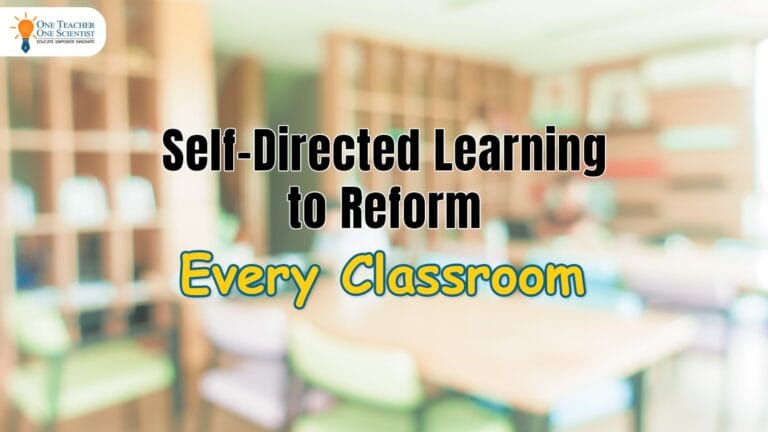Introduction
Bloom’s taxonomy is a simple yet detailed classification of the various levels of Critical Thinking, first stated out in the mid-nineties. It provides a structured approach to building and strengthening different levels of critical thinking skills. Bloom’s taxonomy finds strong relevance in today’s times where educators world over are trying to give learners continuous opportunities to build critical thinking as an important competency skill in the 21st Century.
Critical Thinking and Bloom’s Taxonomy
Bloom’s taxonomy delineates the cognitive processes and represents it in the form of a pyramid which is known as the Bloom’s pyramid. The Bloom’s pyramid has undergone several changes over the years. However at its core, it identifies six stages of cognition. Earlier these six stages were termed as Knowledge, Comprehension, Application, Analysis, Synthesis, and Evaluation, and the entire framework showed progression from basic recall of information to the complex task of evaluation. However, the latest Bloom’s pyramid shows the six stages of Cognition from Remembering and Understanding as the lowest two levels of cognition, which progress to Creation at its peak, with Applying, Analysing and Evaluating as the middle rungs of the pyramid. This encourages learners to advance their critical thinking capabilities with advancement of each level of the pyramid.

Low and High Order Thinking Skills in Bloom’s Taxonomy
We can perhaps divide the entire list of the stages of Bloom’s pyramid into two clear groups of Low Order Thinking Skills and High Order Thinking skills. When we dissect the stages on the Bloom’s Pyramid, Remembering, Understanding and even Applying to a certain extent could be placed in the Low Order Thinking Skills group. The cognition level involved in these stages does not involve very challenging thought process. As we move from Applying to Analysing, Evaluating and Creating, the thought process needed can be quite complex, multidirectional and challenging because it is at these stages that critical thinking truly blooms. Here, we could also note that Analysing and Evaluation may go hand in hand but are quite different in their cognitive approach. While Analysis involves dissecting information to understand its organizational structure, Evaluation challenges students to make judgments based on criteria and standards. By creating projects, worksheets and even questions, teachers can nurture these high order thinking skills by posing challenges that require students to differentiate between fact and opinion, create new solutions to problems, or defend their positions with evidence. This would ensure that the thinking required for such activities hover around High Order Thinking skills.
Bloom’s taxonomy therefore serves as a useful and practical tool for educators to structure the way they teach thinking skills. By adopting this framework, educators can design lessons that build upon each cognitive step, and even craft a learning journey that encourages their learners to not just know, but understand, apply, analyze, create, and evaluate information. This would hugely help in breaking age old practices of Rote Learning and push children towards Skill building
Using Bloom’s Taxonomy to Craft STEAM Projects and Holistic Learning
Critical thinking is catalysed as well as analysed by questioning. Bloom’s taxonomy aids educators in constructing learning frameworks that involve not just memorisation but aids engagement with tasks at a much deeper level. For instance, questions in worksheets and exercises could be designed to not just recall information but analyse and evaluate. One could also design questions that help children evaluate situations at the first stage of their constructivism. On presenting a mandala or even a Rangoli pattern, a teacher might ask, “What patterns do you find?” Children could then be asked to evaluate and answer “How would you include triangles to improve on the original design, without disturbing the balance of the design? Give a reason to support your suggestion.”
Such questions would give students the required push to engage with their tasks and learning material at a much deeper level that would require them to stretch their cognitive abilities and foster High levels of critical thinking. At One Teacher One Scientist, we create resources like worksheets and activities that address each and every stage of Bloom’s Pyramid to enable learning at various levels of Critical Thinking. The aim is to make children future ready by fostering skills of problem solving, decision making and creative thinking.
Conclusion
To conclude, Bloom’s taxonomy can be an invaluable asset that every educator can refer to. If after designing every teaching resource, we could ask a simple reflective question to check what levels of critical thinking are being touched upon, then each Teaching learning material can be enhanced in its utility for building high order thinking skills in learners. Research has shown that building high levels of critical thinking is a critical competency for every child to thrive in this in our complex world. By integrating Bloom’s structured approach into teaching pedagogies, we can create learning experiences that foster problem solving can elevate their students’ learning experiences, preparing them to think critically and solve problems creatively.
For teachers looking to integrate these principles into their curriculum, we at One Teacher One Scientist have especially curated courses and workshops that enable teachers to drive every level of Bloom’s Taxonomy into their lesson plans, worksheets and projects they create. These courses empower teachers to integrate theory into practice, giving a fresh life to their art of teaching and make their students future ready in a seamless manner.




